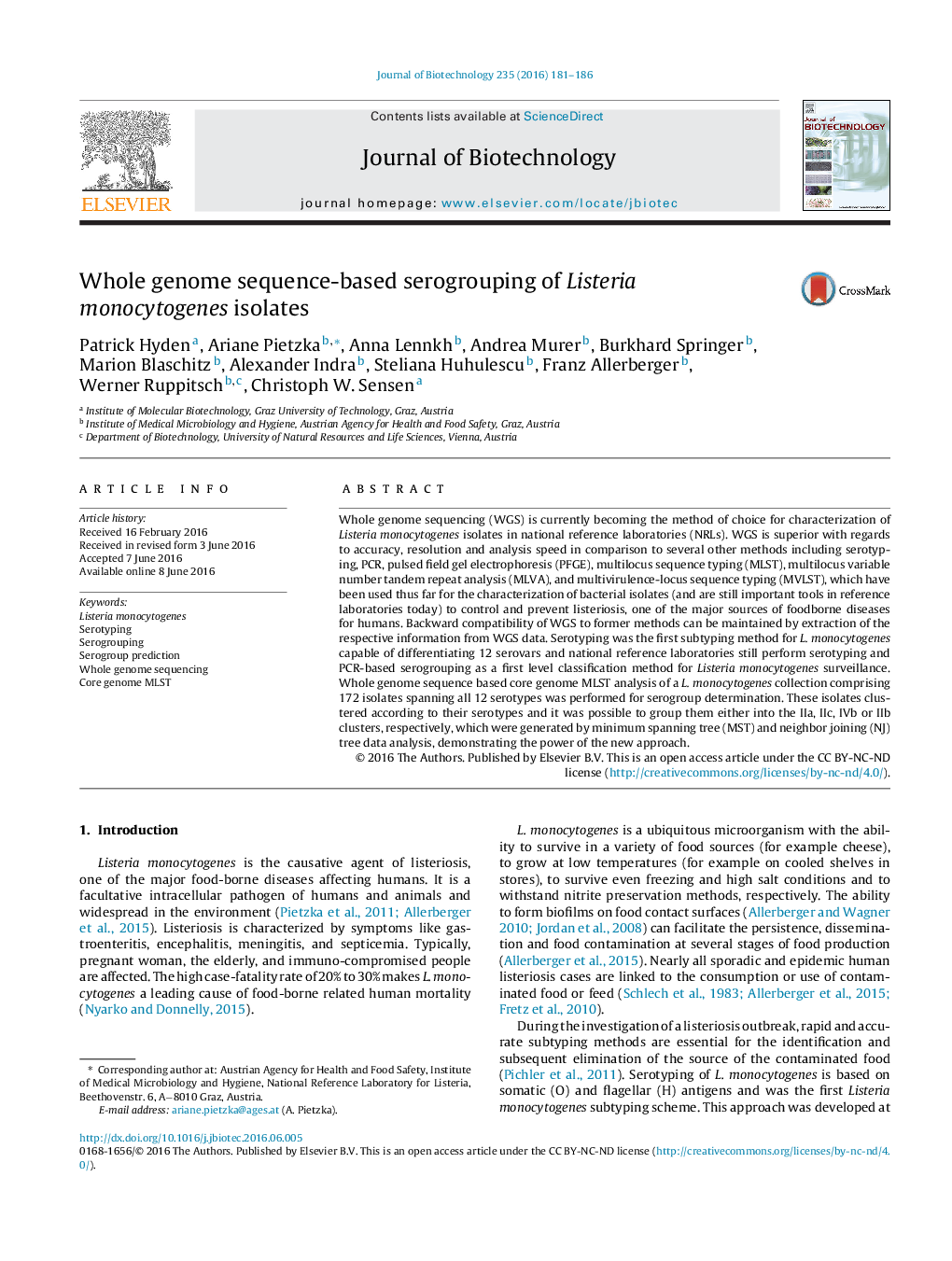| کد مقاله | کد نشریه | سال انتشار | مقاله انگلیسی | نسخه تمام متن |
|---|---|---|---|---|
| 6452340 | 1417010 | 2016 | 6 صفحه PDF | دانلود رایگان |
- Serogroup prediction of Listeria monocytogenes is described for all twelve serotypes by whole genome sequencing.
- Determination of serotypes is carried out by extraction of specific sequence targets of the genome.
- The application of whole genome sequencing as single method shows the potential to replace the most currently used molecular methods.
Whole genome sequencing (WGS) is currently becoming the method of choice for characterization of Listeria monocytogenes isolates in national reference laboratories (NRLs). WGS is superior with regards to accuracy, resolution and analysis speed in comparison to several other methods including serotyping, PCR, pulsed field gel electrophoresis (PFGE), multilocus sequence typing (MLST), multilocus variable number tandem repeat analysis (MLVA), and multivirulence-locus sequence typing (MVLST), which have been used thus far for the characterization of bacterial isolates (and are still important tools in reference laboratories today) to control and prevent listeriosis, one of the major sources of foodborne diseases for humans. Backward compatibility of WGS to former methods can be maintained by extraction of the respective information from WGS data. Serotyping was the first subtyping method for L. monocytogenes capable of differentiating 12 serovars and national reference laboratories still perform serotyping and PCR-based serogrouping as a first level classification method for Listeria monocytogenes surveillance. Whole genome sequence based core genome MLST analysis of a L. monocytogenes collection comprising 172 isolates spanning all 12 serotypes was performed for serogroup determination. These isolates clustered according to their serotypes and it was possible to group them either into the IIa, IIc, IVb or IIb clusters, respectively, which were generated by minimum spanning tree (MST) and neighbor joining (NJ) tree data analysis, demonstrating the power of the new approach.
Journal: Journal of Biotechnology - Volume 235, 10 October 2016, Pages 181-186
